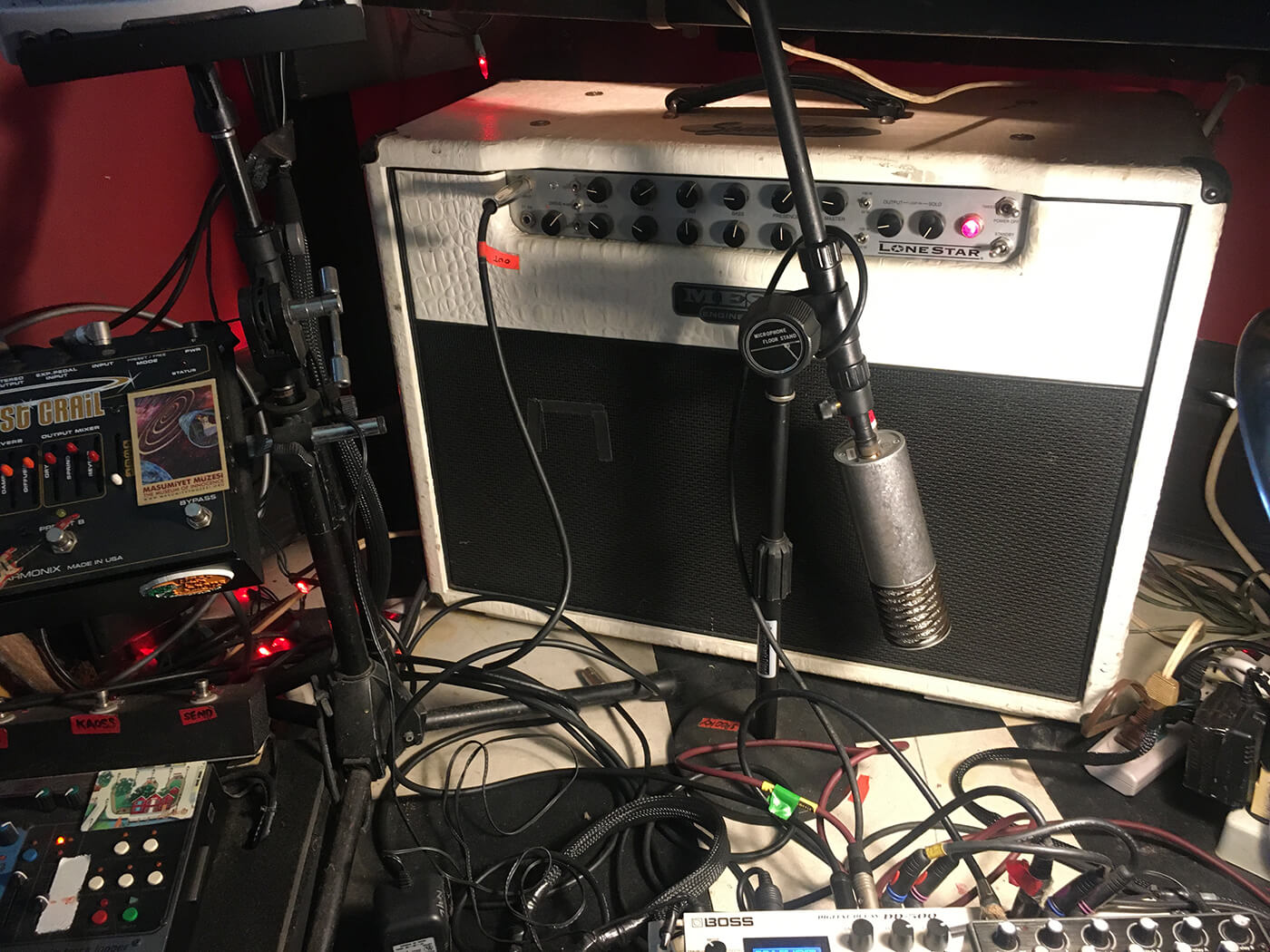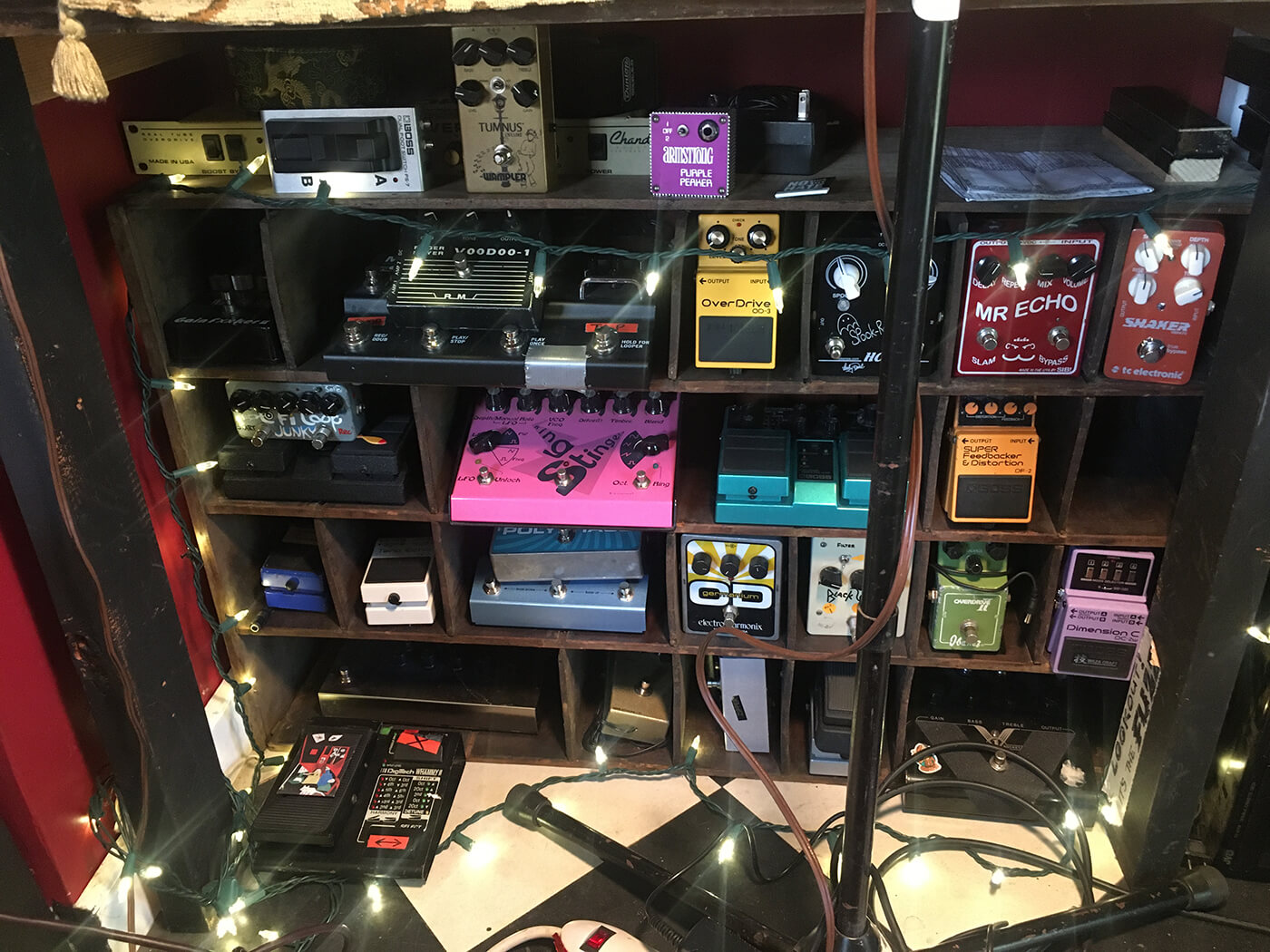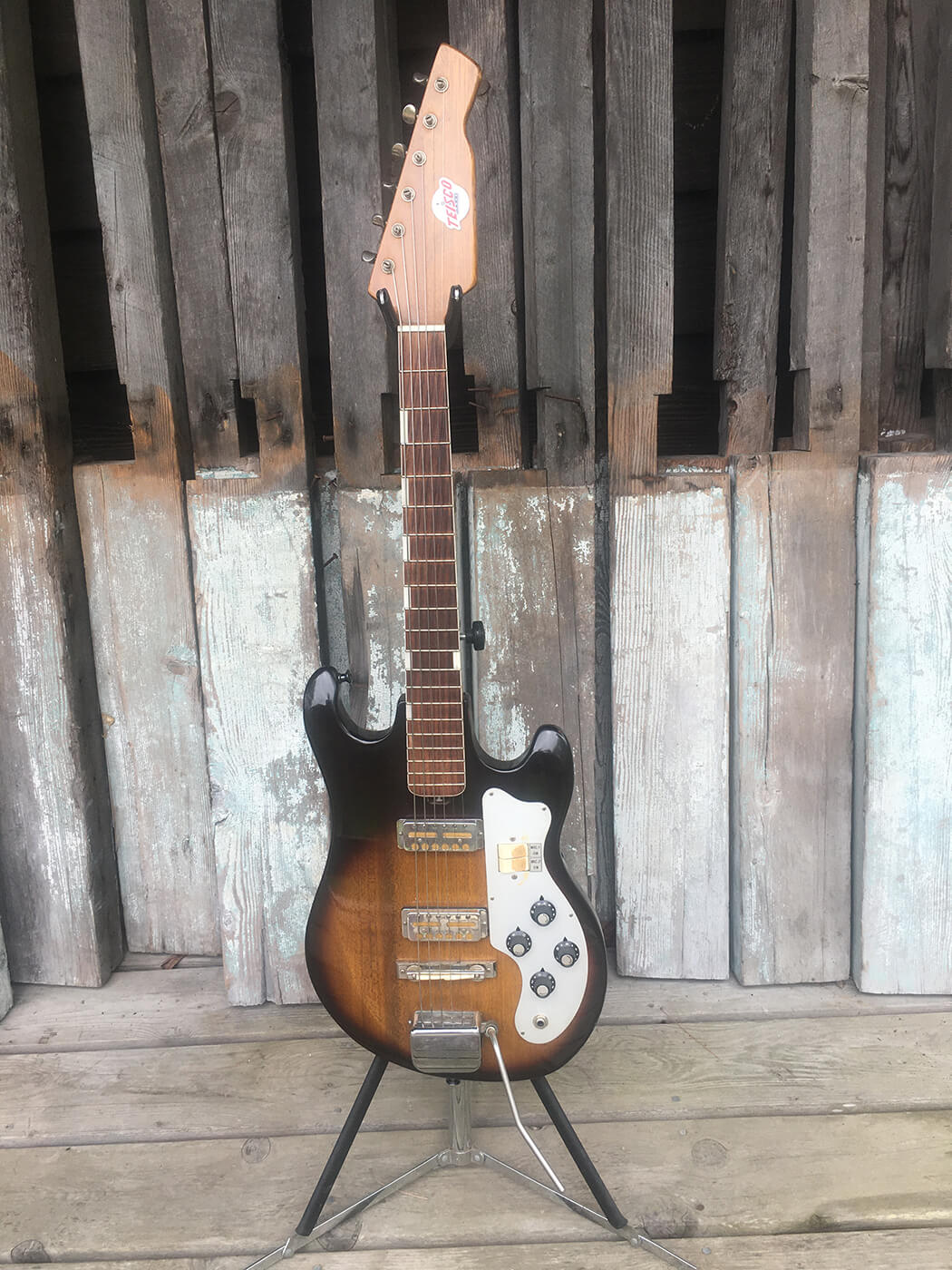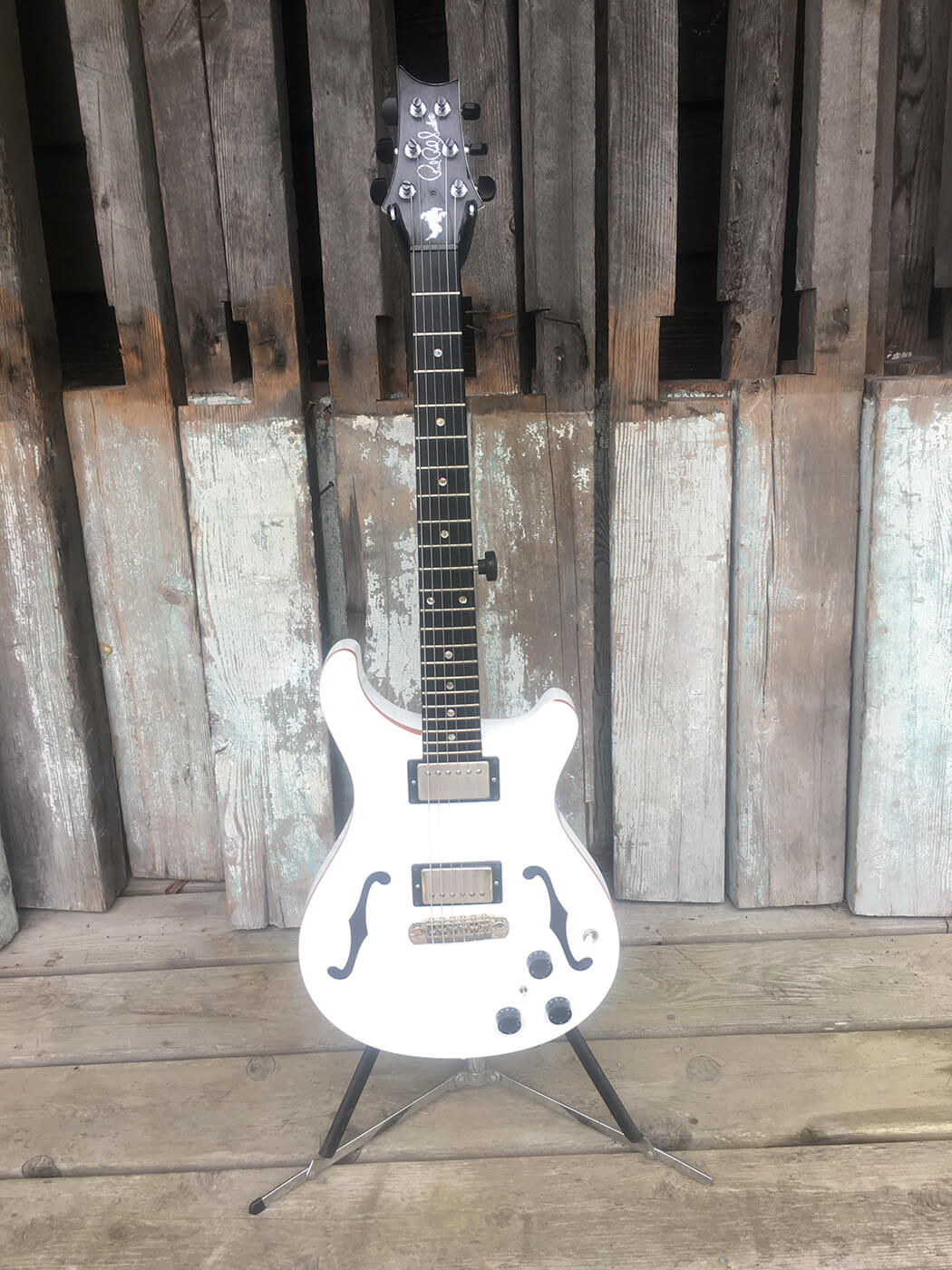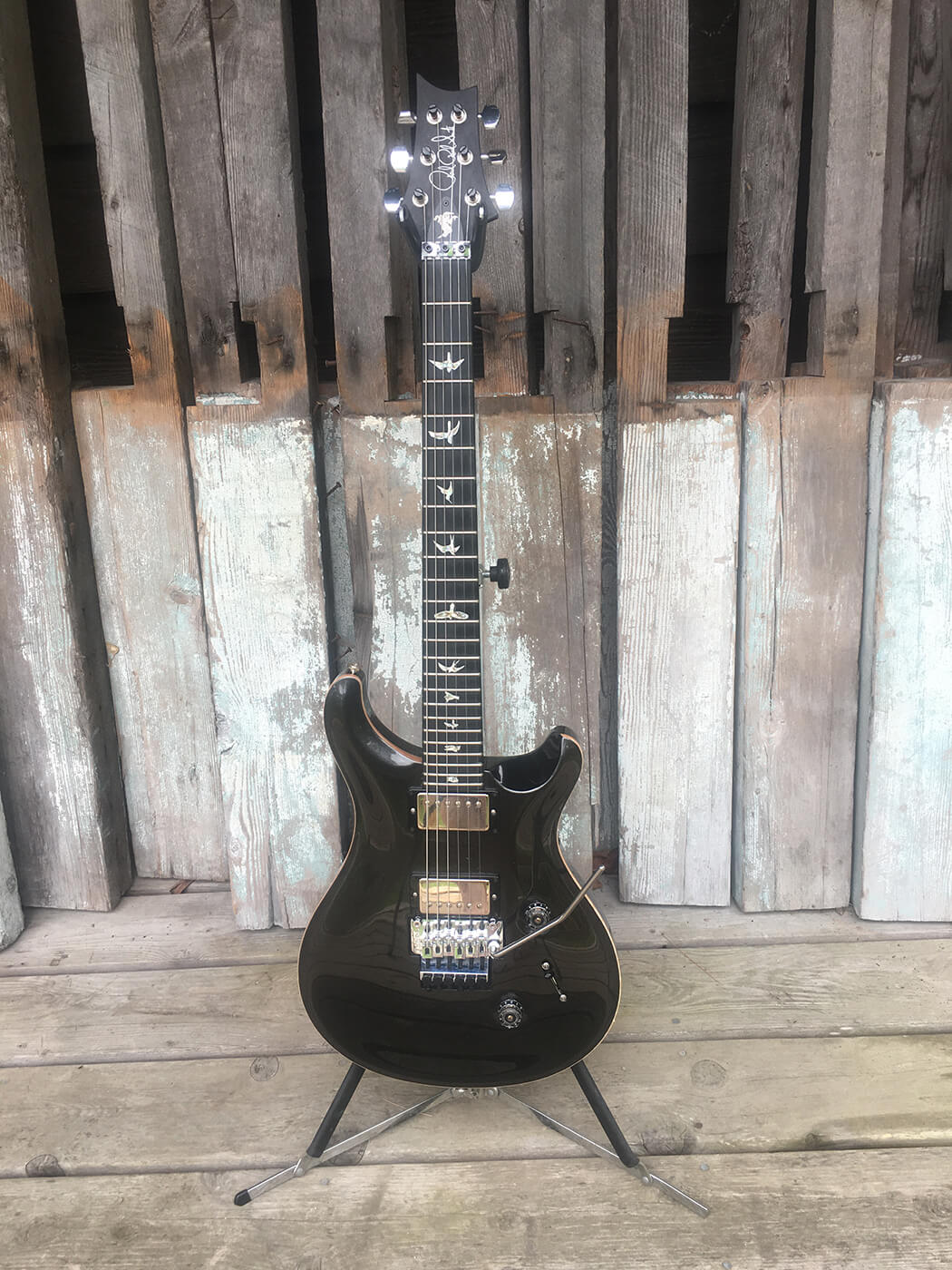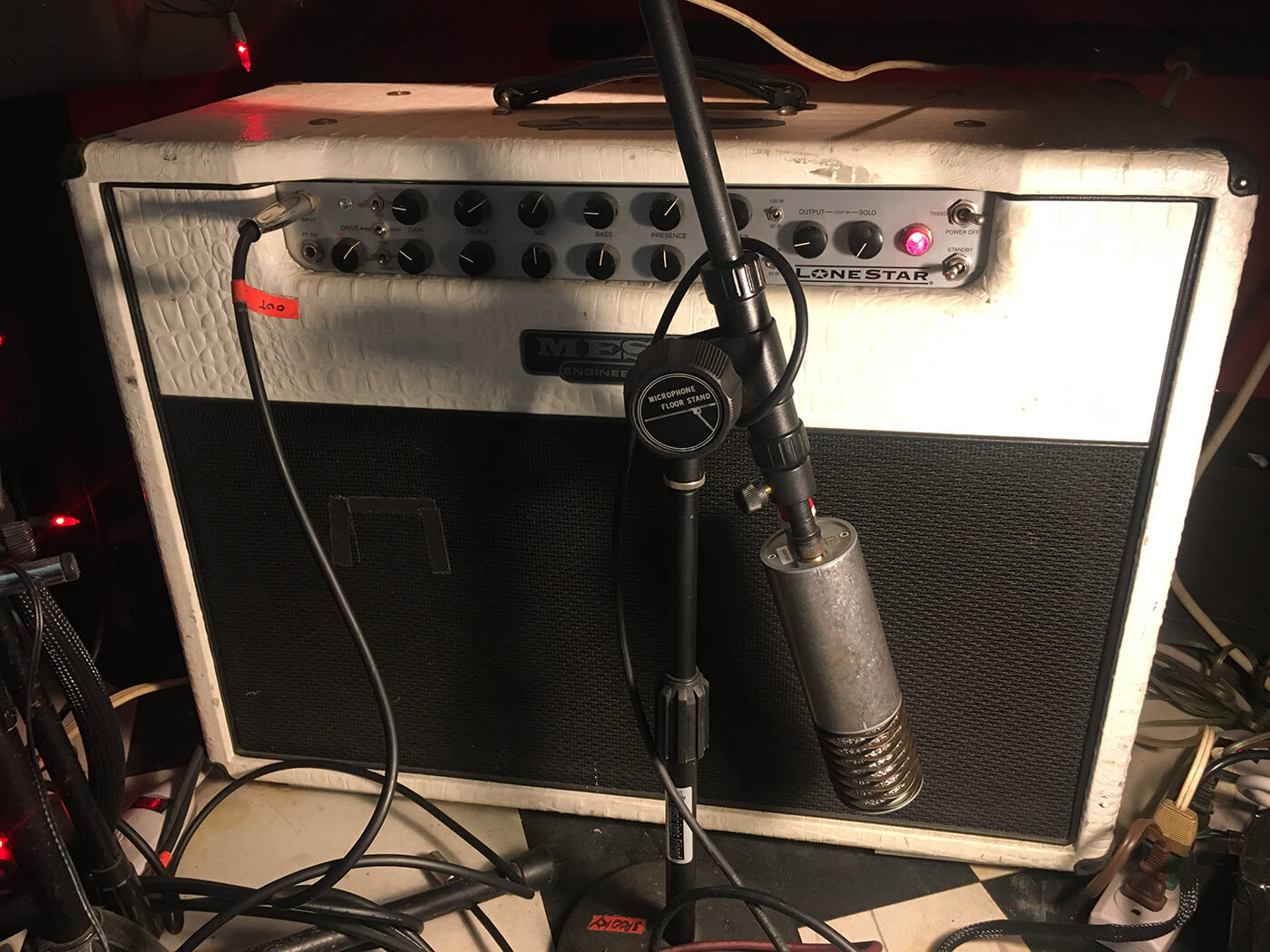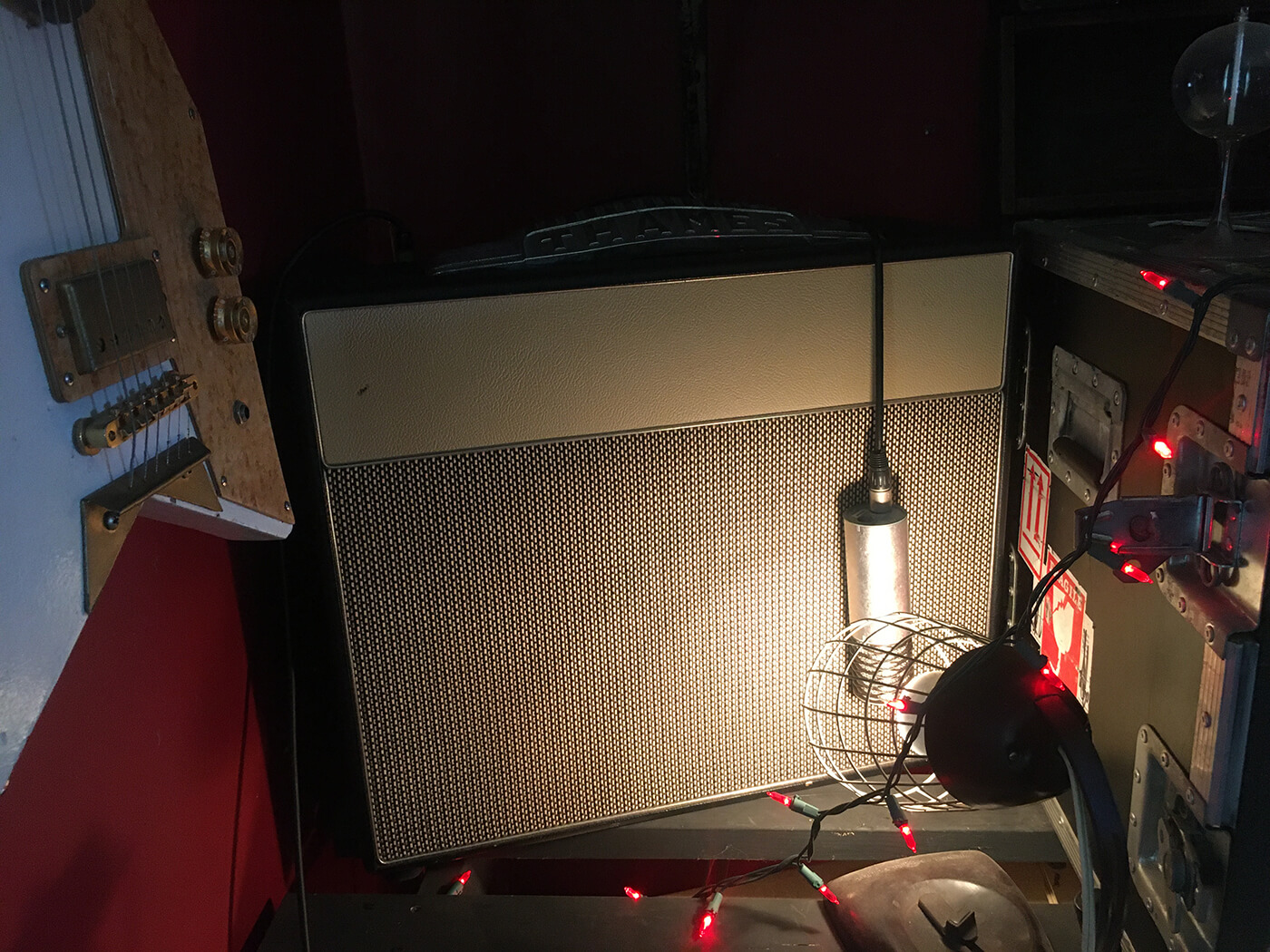Gerry Leonard on touring and recording with David Bowie, re-thinking the guitar and wrangling sound
Gerry Leonard’s career as a pioneer in both the sonic and the live-sphere continues to evolve – here, he discusses his original approach, seizing control of the guitar and being a trusted foil to icons of the music world.
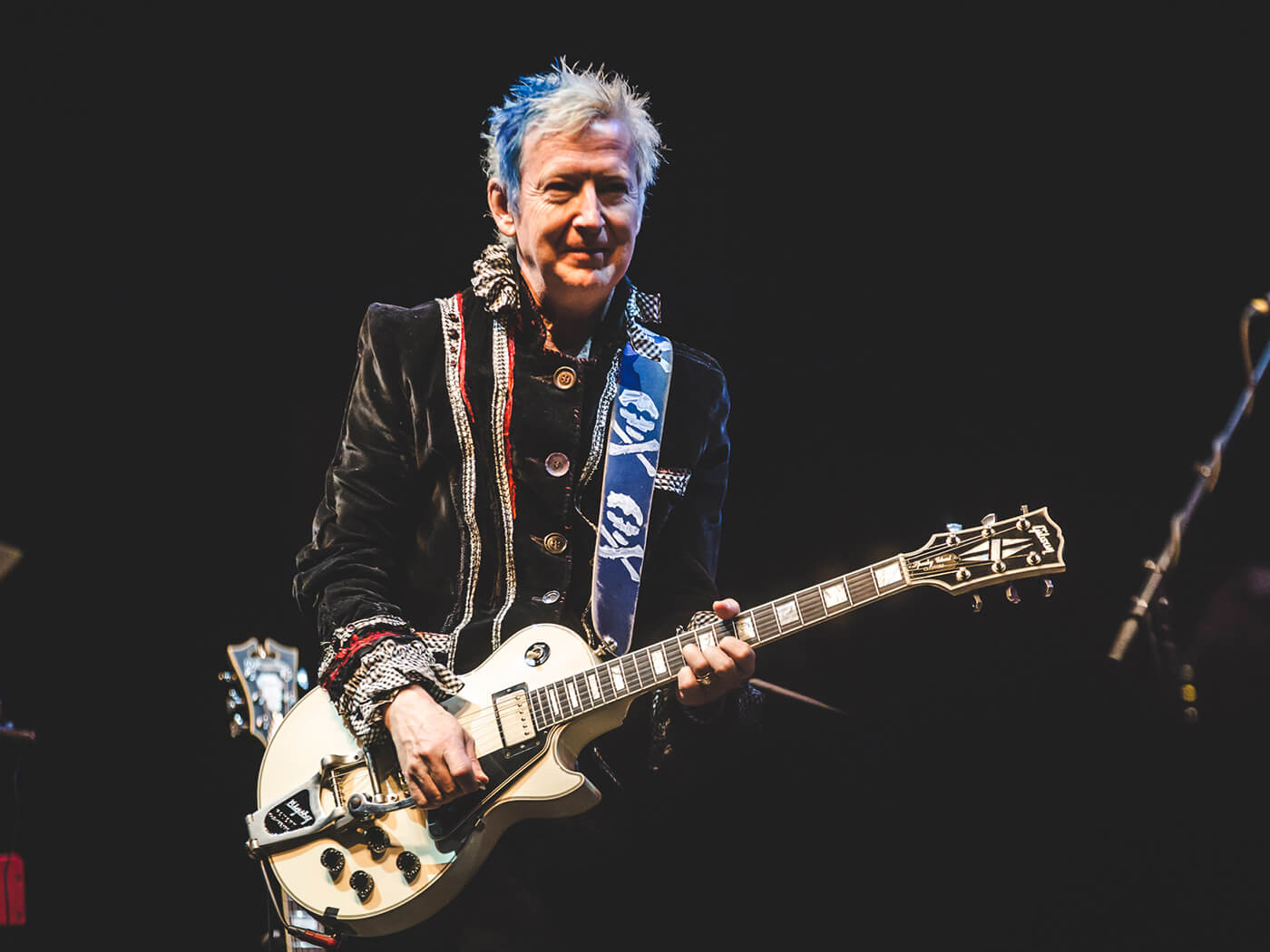
Image: Steve Rose
“Orson Wells once said ‘Ignorance … sheer ignorance. There is no confidence to equal it. It’s only when you know something about a profession that you are timid or careful.’ and I think about that quote often, especially when it comes to music-making.” Gerry Leonard is someone who has a unique view on music, as befits someone who provided guitar foil for David Bowie during some of his most esoteric moments.
Acclaimed as a master harnesser of textured guitar sonics in his guise as Spooky Ghost, Leonard also has set-in-stone industry respect as one of David Bowie’s most integral musical accomplices during his late-era career, working across the early-2000s gems Heathen and Reality as well as his seismic 2013 comeback, The Next Day. Bowie-aside, Leonard has worked with Cyndi Lauper, Avril Lavigne, Rufus Wainright and New York folk-rocker Suzanne Vega, with whom he tours with to this day.
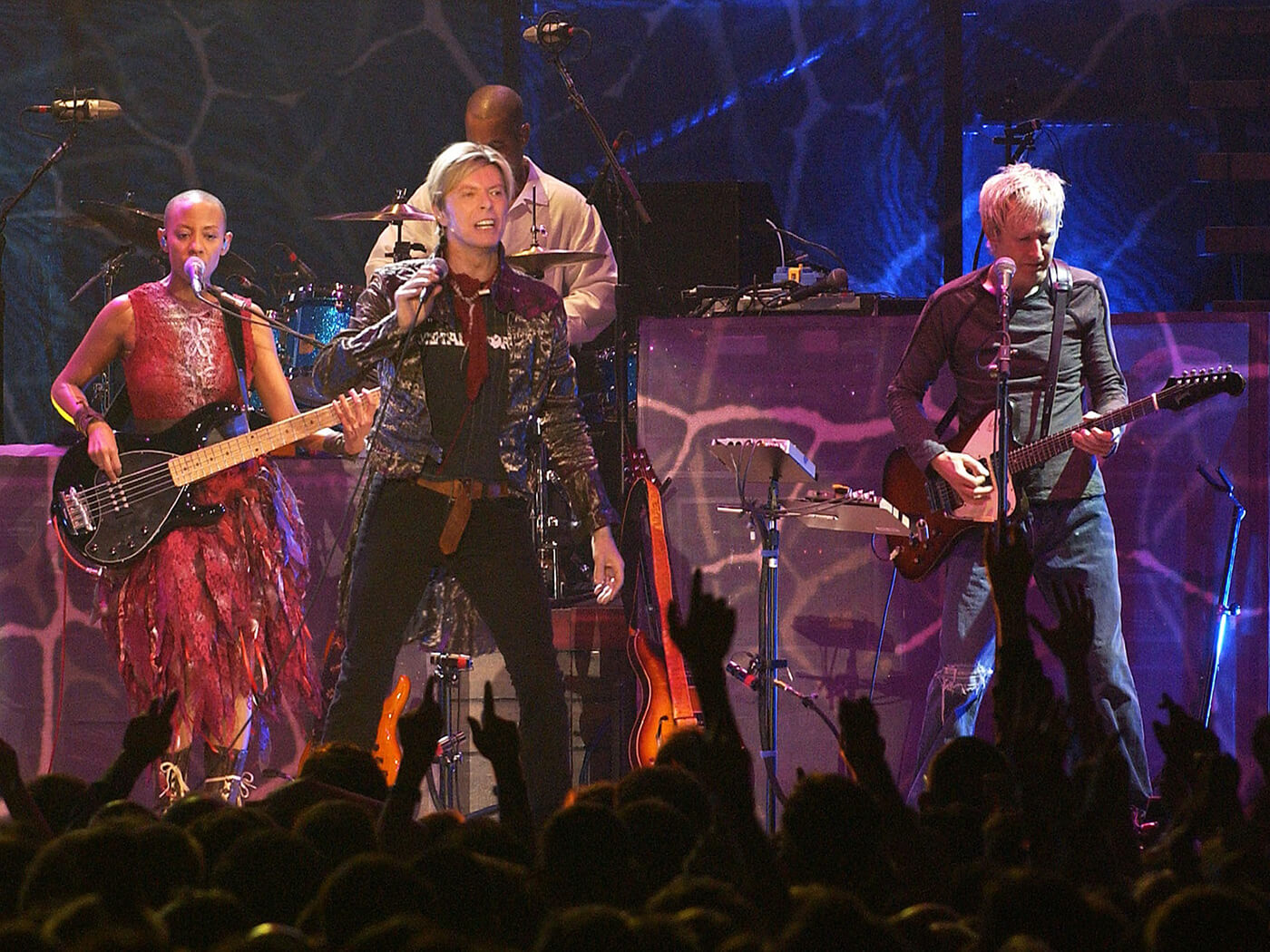
Despite decades of work as a professional guitarist, Gerry still remains in thrall to the possibilities the instrument offers, “I just love the guitar and I’m always looking for those new chords or chord combinations that are not as well trammelled. That’s not to say there’s anything wrong with those standard approaches. Sometimes A minor, G and F is all you need. But I tend to veer towards harmonic content that’s not normal.”
Pandora’s box
Hailing from the Dublin suburb of Clontarf, Leonard’s early fixation with music evolved into a hankering for a guitar to call his own. “I had guitar lessons after school and managed to badger my dad into getting me a guitar,” he explains. “Eventually he did and I got a beautiful little classical guitar. I’d been learning piano before that and I’d grown to kind of hate it in all honesty, it just seemed so arcane and dusty. But with guitar, it didn’t take long to get on top of chords and learn a lot of pop songs of the time. I loved it. I was the youngest of four in the family so in a lot of ways nobody really cared what I was up to. I had my guitar and I went back to the piano and I figured out the three-chord trick by myself. That was like unlocking Pandora’s box – suddenly I could play any song!”
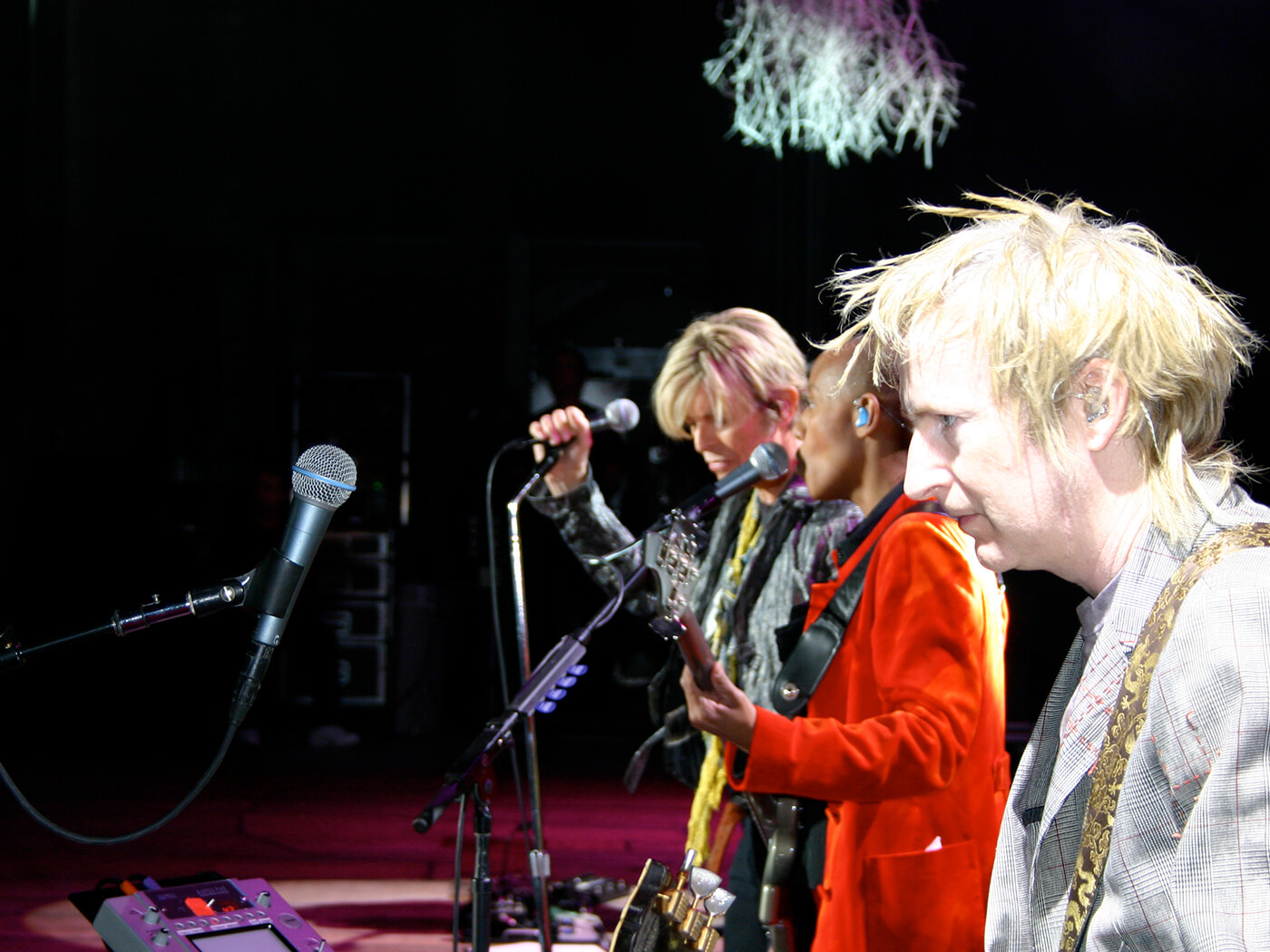
Straight out of school, Gerry found further musical enlightenment with a stint in a studio. “One of my dad’s friends helped me get an interview at Lombard Studios, which was the only 24-track studio in Dublin at the time, to be a tape op,” he recalls. “I got the job and then went straight into that. I worked the graveyard shift and would work from 6pm until 6am, we’d get bands in on the weekend. It was amazing to get to work with all that pro gear – I went from working with a cassette tape recorder to having access to a Neumann U87 and a Helios Mixing Console.”
Youthful forays in numerous bands fed Gerry’s hunger to learn more. “The only way I could do that was to study classical music,” he says. “It was a shock really because I really had to start kind of from the beginning again with technique and everything. I studied that for about five years. I was fascinated because learning it classically almost made the guitar a new instrument for me. I learned all about melody and counterpoint. I did a performing diploma with the London College of Music, and I finished that up in my early twenties.”
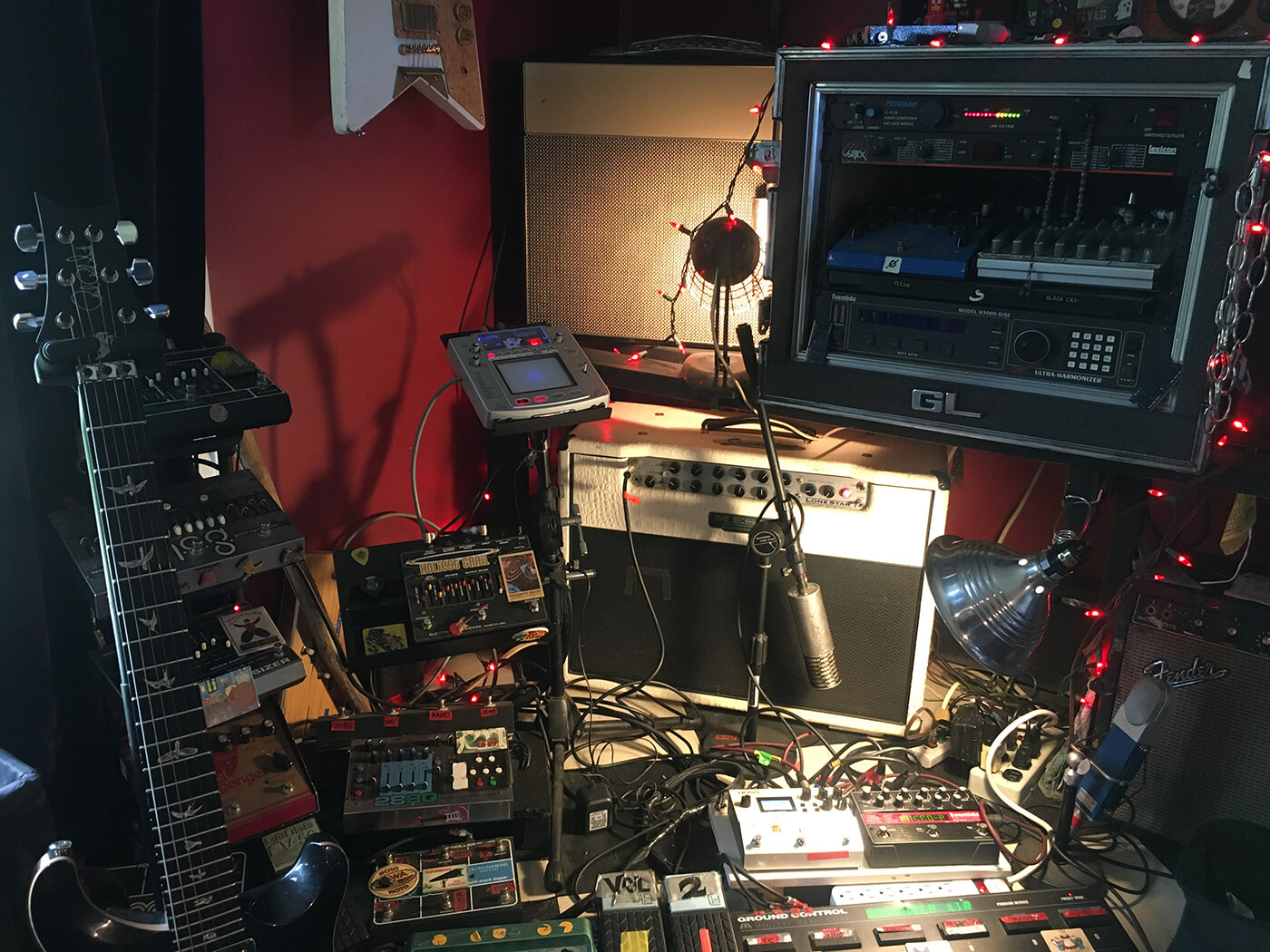
A New York minute
Gerry’s absorption into the industry was soon accelerated after his band Hinterland clinched a record deal “We met [famed U2 producer] Chris Blackwell and made a record and a couple of videos. That was a huge stepping stone and that eventually, once that era came to a close, I moved to New York. But when that finished I thought I’ve got to either start another band or get out,” Gerry remembers.
As time marched on, Gerry focused on honing a unique guitar approach, before suddenly finding himself in the sights of one of the music world’s biggest icons “Well, I’d lived in New York for a while and had been on a journey of establishing myself as a guitarist predominantly,” he explains. “I always wanted to sound different to other guitar players and just took that to another level really. I tried to carve out an identity as a more ambient guitar player. I saw the instrument more as a painter really, creating sounds and textures within the ensemble of the band. So that led to me doing a lot of solo stuff, playing the way I wanted to play. When you’re working with an artist you always have to bend a little to what they want, but on my own I was finding it quite liberating at the time. In my artist guise – Spooky Ghost – I could (and still can!) do whatever I wanted.”
Being plugged-in to the New York scene led Leonard to establish a number of vital contacts, including one which would have a massive impact on his life…
“Well I was on the scene and I was working with a bunch of different producers. The amazing producer Mark Plati was a friend of mine and at that point, he was working with David Bowie,” says Gerry. “The nuts and bolts of it was that I was working in the same studio [Looking Glass Studios] and I was in a smaller room working on another project. Bowie and Mark were in the big room. So Mark came down to see me as he knew I was there and he said he was having trouble with a mix, he gave me a CD of a David track he was working on and said ‘can you put some guitar on this and bring it back to me tomorrow?’ I was, of course, thrilled!
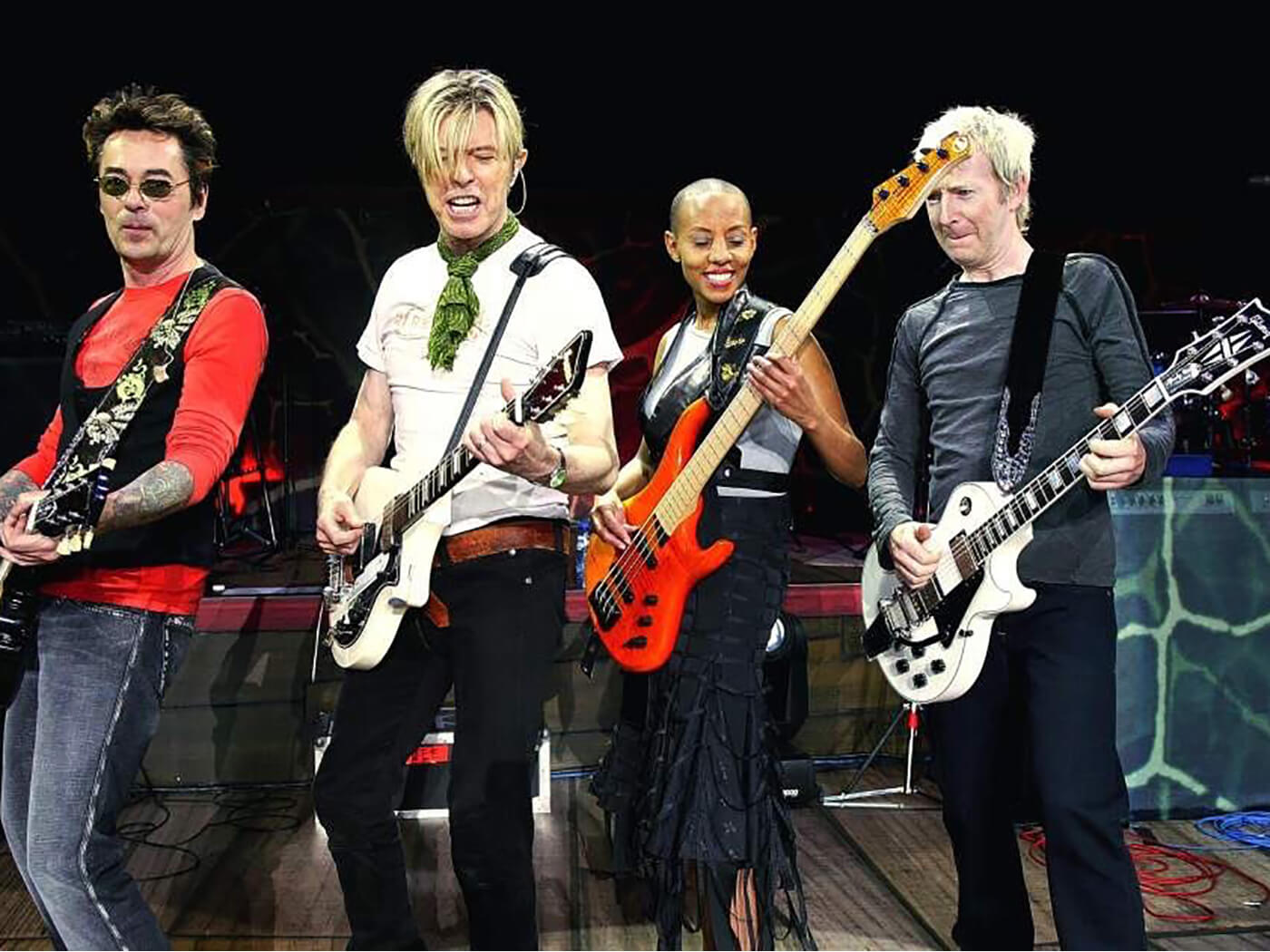
Gerry hurried home to his flat in Greenpoint, Brooklyn and loaded up the session, “It was incredibly intimidating actually,” he explains. “In the end, I just decided to do what I felt was natural to me, I didn’t want to reinvent the wheel. I did what my instincts told me to do and I brought the track into Mark. He loved it and then later told me that David loved it too, I asked if I could meet him. So I walked into the studio one day and suddenly there he was. We shook hands and then I probably said something really stupid. From there I became one of David’s guitarists and eventually musical director for the Reality Tour in 2003/4.”
Fantastic voyage
As Musical Director of Bowie’s acclaimed band, Gerry’s role went beyond knowing his parts and the arrangements, it was his role to keep multiple professional musicians abreast of every song in the legend’s repertoire; “The challenge with that job is that some people can read music like [Bowie’s long-time pianist] Mike Garson, whereas someone like lead guitarist Earl Slick would play more instinctively,” he explains.
“So I’d sit with him and our guitars and just go through it old-school. You have to tailor your approach. Everyone has their own process and I suppose that the core role of the Musical Director is to make all those processes meet. So once we’re at rehearsal everybody’s on the same page, then David can come in and give his two cents. There’s also the technical aspect of evaluating songs, figuring out how to do certain things live. The day to day running of the band. It ends up being a pretty busy job.”

This experience shaped Gerry as a responsible bandleader, and yet he still managed to apply his own stamp to the songs, as he reflects: “You do get a chance to bring your aesthetic to the project, and that’s something that I’m passionate about. Trying to be the gatekeeper of what’s good and what could be better. Sometimes it’s good to challenge ourselves to go a little further. In David’s band, we had a good spirit of pushing ourselves beyond being too complacent with arrangements. That was one of the most enjoyable aspects of it in all honesty. As a sound-oriented guitarist, I would look for those colours. I would do all the looping and layering right there live on the stage and not depend on any pre-recorded audio. It feels more creative and spontaneous. There’s communication with the audience.”
Ghost notes
Gerry’s painterly approach to guitar sounds certainly got him noticed and respected, we push him to explain his processes further, how does one begin to compose in this style?
“Well aside from the odd chord shapes and chord sequences that I keep hunting for, I’ve explored a lot of modes and I’m always keen to deepen my understanding of harmony,” he notes. “I look for keys that are not really played very often on the guitar, like A flat for example – but you can still use an open G which is the major seventh of that key. With those kinds of approaches, you start to get into these interesting things going on. Something might start to then emerge, and I’ll write a melody and some lyrics. Then that becomes a Spooky Ghost song. It has to satisfy a certain amount of criteria for me, to feel like it’s worth repeating. It doesn’t necessarily have to be super-complex.”
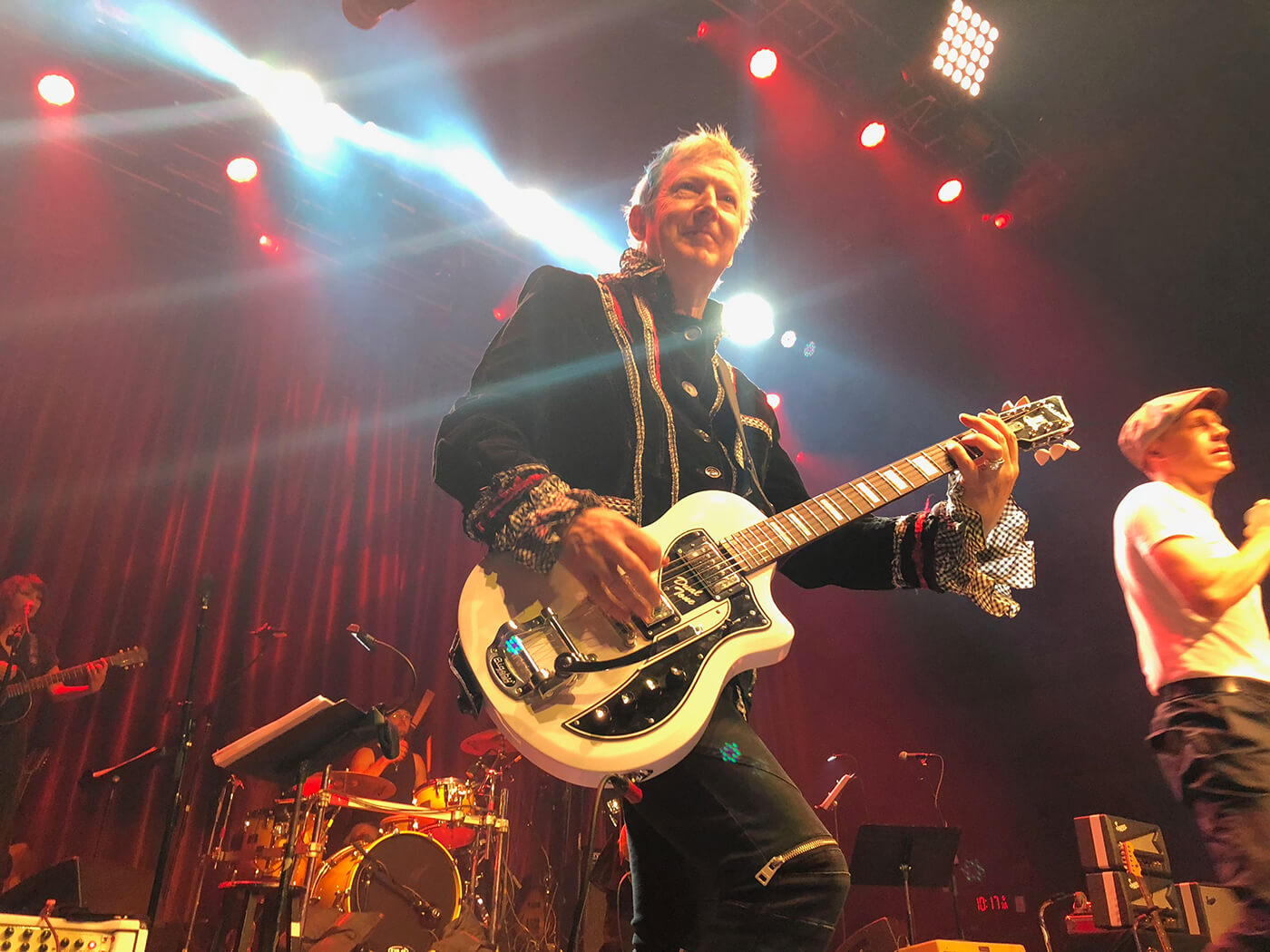
In his ongoing hunt for creative inspiration, Gerry uses a range of pedals in the studio to get the most colourful signal chains he can, but how does this translate to the live arena? “The studio is a lot more flexible obviously, because you can just go for a sound and that could be a little cigarette box amplifier with a fuzz box plugged into it and it’s great and sounds perfect for the track. But with playing live you can’t just switch. But maybe you don’t need to do that live.”
“My live setup is all about having as many different tonal colours available within a compact, flyable rig.” Gerry continues “These days it’s got to get on an airplane. So I’ve tried to pare back to really essential things. But also things that create a palette of options, so I can switch from ambient, beautiful sounds to a really dry rock ’n’ roll thing or whatever. You’ve then got a rig that’s really versatile. But in the studio too that rig comes into play. I actually have one or two rigs set up that have slightly different characteristics and then I’ll flip-flop between those two when I’m recording. If someone sends me a track and I have a flash of inspiration then I can really quickly go to the right sound, use it as a template and then develop that further.”
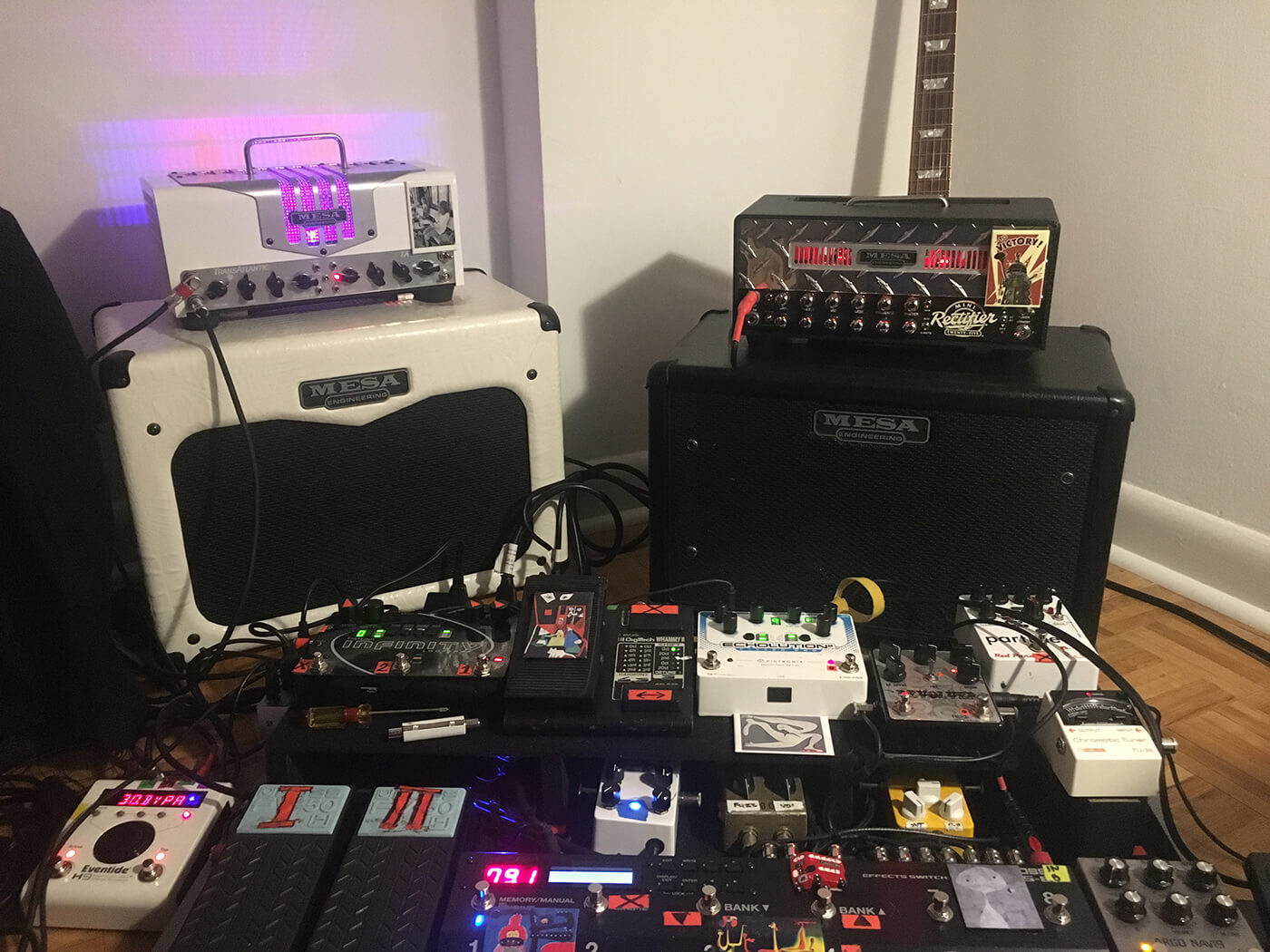
Gerry is keen to adapt new tech into his rigs, as well as simplifying the ever-expanding worlds where possible “A big change for me was moving to a switching system to take snapshots and also send MIDI commands out and control external MIDI devices such as delay patch changes and stuff like that. That opened up a lot of options for me, especially back on the Reality tour with David, where we rotated around 64 different songs. There needed to be a recall system, so you could build a song in a bank and instantly recall it for David if he decided he wanted to do that song. Those sonic footprints were important.”
Though Gerry has a penchant for certain pedals in the studio, sometimes they just don’t perform well on the stage; “I have the ZVEX Fuzz Factory – a pedal I really love. It works great for overdubs but whenever I try and use it live it just doesn’t translate. That’s just me and the sound I need though, however a cheap Electro Harmonix Big Muff works really well in a live setting, so that goes in the live rig.”
“When you turn on an effect live you want the sound to kind of move ‘forwards’ and not ‘backwards’ so sometimes simpler things just work better for that.” Gerry elaborates “I have realised that over the years, that you have to consider the room sound too. There’s a whole chemistry about that process as well.”
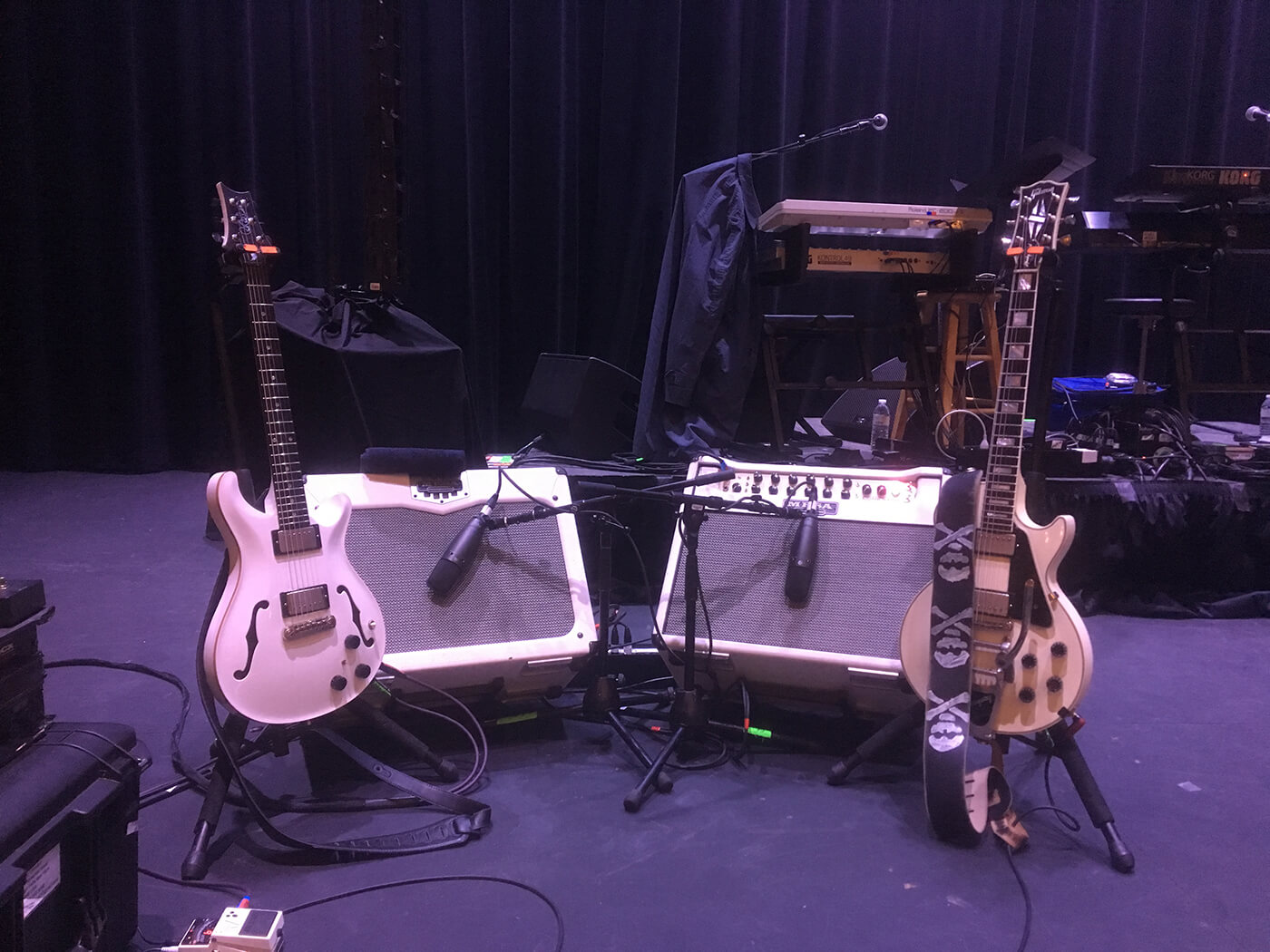
Word to the wise
We wonder if Gerry can share some words of wisdom for those who are eyeing the guitar with a similar sonic attitude “With electric guitar you have to kind of master being able to control it and go the way you want it to go,” he reflects. “You need to be able to wrangle that sound in and make it do what you want it to do. Similarly with ambient music, it’s harder to kill something that’s not working because by its very nature it keeps going on and on. You have to be prepared and have a way of controlling that. That’s number one.
“Also, not all sounds will project, especially in a band setting so you need to find a space in the sound for your ambience to live in, and not dominate all the space.The voicings that you choose on the guitar are also quite important, there’s a little bit of trial and error. For me that’s the way to do it. There’s a lot of promises made with these multi-effects things, they don’t always do what you want them to do though. You have to keep a good sense of where you want to go.”
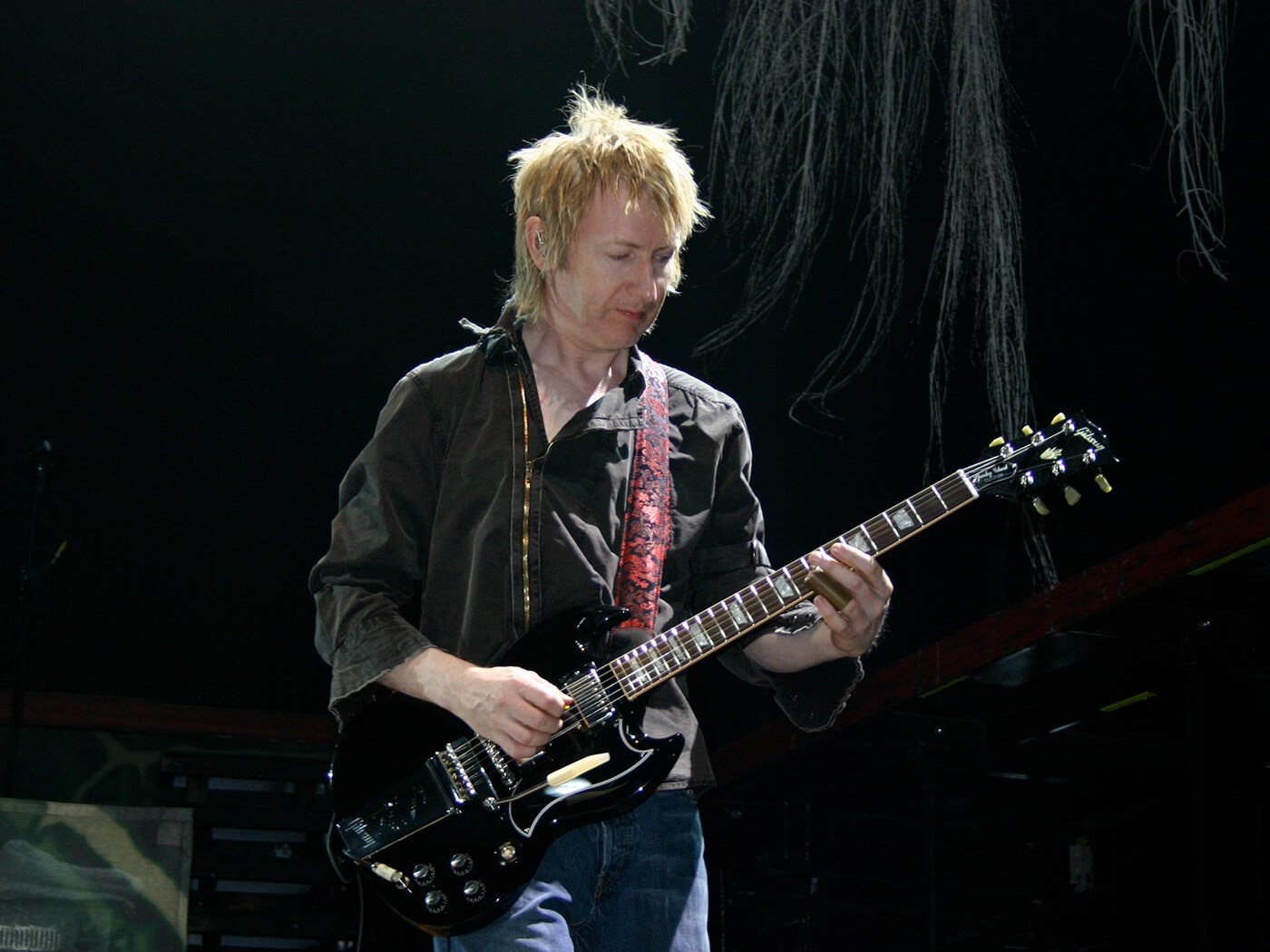
A sad consequence of the Covid-19 lockdown has meant that Gerry’s touring-heavy year has had to be massively curtailed, however this only increased Gerry’s burning enthusiasm for live performance
“I love playing live!” Gerry tells us “I like the immediacy and communion of it. It gives me a good reason to be a musician, to be out there supporting these artists. I think music makes a huge difference to people’s lives. If that cannot happen then I’ll be focused on remote recording.
“Being at home has reminded me of a few things. I’ve dug out this Chandler Tube Drive distortion out of my shed when I was sorting some stuff. I plugged it in and it still works and it’s kind of incredible. So who knows what I’ll dig out next!”
For more artist interviews and features, click here.


